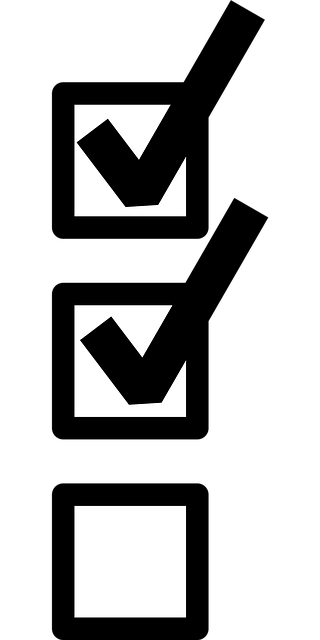The complex landscape of Select Emissions Regulations requires businesses to navigate sector-specific rules for environmental preservation. Key compliance standards, including the Clean Air Act and energy efficiency regulations, are crucial for reducing air pollutant emissions. Understanding local, national, and international policies, such as those in the EU, is essential for accurate tracking towards global warming targets. Visualizing industry-specific requirements and tracking progress using advanced tools are vital for compliance and sustainable practices across sectors, contributing to healthier environments and combating climate change.
In today’s environmentally conscious world, understanding and adhering to emission regulations is paramount for industries worldwide. This article guides you through the intricate landscape of emissions controls, focusing on how businesses can navigate these requirements. We explore key compliance standards, offering a global perspective by charting select emissions regulations by region. Additionally, we analyze temporal limits and visualize industry-specific needs, enabling readers to track progress towards compliant emission levels.
- Understanding Emissions Regulations Landscape
- Identifying Key Compliance Standards
- Charting Select Regulations by Region
- Analyzing Emission Limits Over Time
- Visualizing Industry-Specific Requirements
- Tracking Progress Towards Compliant Levels
Understanding Emissions Regulations Landscape

The landscape of emissions regulations is vast and complex, with various laws and standards governing different sectors to ensure environmental protection. When it comes to understanding compliant emission levels, businesses, especially those in industrial fields like chemical plants and green building construction, must navigate this regulatory maze. The select Emissions Regulations focus on reducing pollutants in the air, water, and soil, addressing issues from harmful chemical plant emission controls to wildfire smoke emission controls.
These regulations are driven by global efforts to combat climate change, as reflected in ambitious global warming emission targets. Industry players are increasingly required to conduct environmental impact assessments for their operations, ensuring compliance with not just local but international standards. This includes implementing green building emission standards and adopting innovative solutions to minimize the ecological footprint, thereby contributing to a sustainable future.
Identifying Key Compliance Standards

Identifying Key Compliance Standards is a critical first step in managing and tracking emission levels. When navigating the complex landscape of environmental regulations, understanding which Select Emissions Regulations apply to your operations is essential. The Clean Air Act Amendments, for instance, set national standards for various air pollutants, guiding industries on reducing their emissions significantly.
Additionally, energy efficiency regulations for industry play a pivotal role in minimizing overall emissions. As these standards promote the use of cleaner technologies and processes, they contribute to broader environmental goals. Moreover, with growing concerns about wildfire smoke emission controls, businesses operating in affected areas must stay informed about regional specifications to avoid contributing to this pressing environmental issue.
Charting Select Regulations by Region

When creating a compliant emission levels chart, one strategic step is to Select Emissions Regulations by region, ensuring coverage of all relevant areas of operation. This involves an in-depth understanding of local, national, and international policies governing industrial emissions monitoring tools. Different regions have distinct environmental standards and goals, with some, like the European Union, having stringent regulations on environmental impact assessments for industry.
Focusing on key Select Emissions Regulations, businesses can accurately track their progress towards global warming emission targets. For instance, landfill gas capture regulations in certain jurisdictions require strict monitoring to minimize methane emissions from waste disposal sites. By mapping these regulatory requirements geographically, companies can tailor their environmental strategies and reporting efforts, demonstrating compliance while contributing to a more sustainable future globally.
Analyzing Emission Limits Over Time

The evolution of emissions regulations is a key indicator of our progress in mitigating local pollution control initiatives and addressing climate change emission mitigation. By analyzing the historical data, we can identify trends and patterns that showcase the effectiveness of various Select Emissions Regulations. This long-term perspective reveals how standards have become stricter over time, reflecting a global push towards cleaner air. The graph would ideally display this trend visually, highlighting pivotal regulatory changes and their impact on emission levels.
Understanding these changes is crucial for crafting sustainable solutions, such as integrating renewable energy emission limits and promoting green infrastructure for air quality. As we look to the future, adhering to these evolving regulations will not only ensure environmental protection but also foster a more sustainable and resilient urban landscape, where innovative approaches like renewable energy sources and eco-friendly city planning play a significant role in reducing emissions and combating climate change.
Visualizing Industry-Specific Requirements

Visualizing Industry-Specific Requirements is a critical aspect of achieving compliance with emission levels. By selecting the appropriate Emissions Regulations, businesses can tailor their practices to meet specific industry standards. This involves understanding and interpreting Air Quality Standards, which are often nuanced and vary across sectors. For instance, regulations governing manufacturing plants differ from those for transportation or agricultural operations.
For example, the use of biodegradable material regulations in packaging industries demonstrates a targeted approach to reducing environmental impact without compromising productivity. Similarly, energy efficiency regulations for industry encourage the adoption of innovative technologies that not only cut emissions but also lower operational costs. Effective visualization tools allow stakeholders to grasp these requirements swiftly, ensuring compliance and promoting sustainable practices throughout various sectors.
Tracking Progress Towards Compliant Levels

Tracking progress is an integral part of ensuring compliance with emission levels. Organizations and industries must implement robust systems to monitor their emissions regularly, especially when adhering to stringent Select Emissions Regulations. This process involves utilizing advanced tools and technologies to gather data accurately, which can then be analyzed against set targets and legal requirements. By doing so, they can identify areas where they excel in meeting standards and sectors that may need improvement.
The journey towards compliant levels often requires a strategic approach, especially when considering the broader context of global initiatives like air quality health advisories, renewable energy promotion laws, and energy efficiency regulations for industry. Implementing effective tracking methods allows businesses to stay ahead of potential fines and legal issues, ultimately contributing to a healthier environment through improved air pollution control techniques.
Compliance with emission standards is a dynamic process, and understanding the evolving landscape is key to staying ahead. By charting select emissions regulations by region and analyzing historical limits, businesses can anticipate future requirements. Visualizing industry-specific requirements allows for targeted strategies, while tracking progress enables proactive measures. Ultimately, navigating these standards effectively contributes to both environmental sustainability and business success in today’s regulated market.
